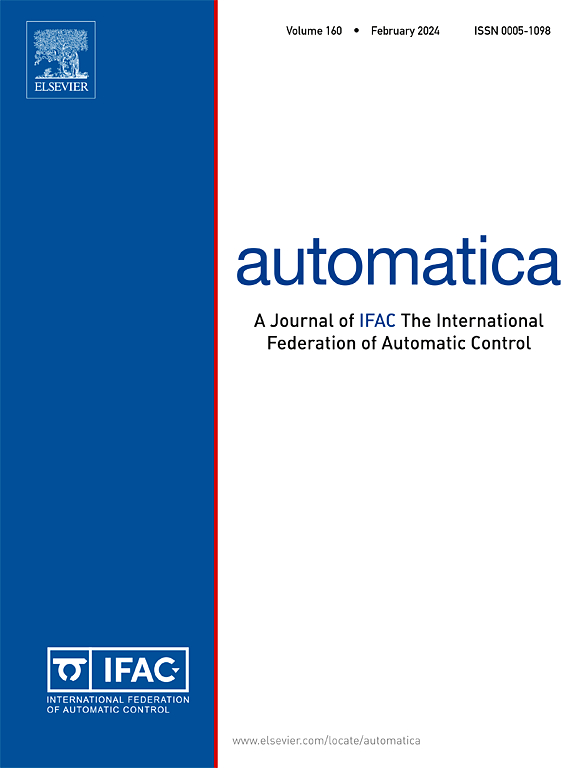基于Koopman算子学习的非线性系统线性二次控制及Nyström方法
IF 5.9
2区 计算机科学
Q1 AUTOMATION & CONTROL SYSTEMS
引用次数: 0
摘要
本文研究了如何将库普曼算子框架与核方法相结合来有效地控制非线性动力系统。虽然核方法通常有大量的计算需求,但我们展示了如何使用随机子空间(Nyström近似)在保持准确性的同时实现巨大的计算节省。我们的主要技术贡献是推导出Nyström近似效应的理论保证。更精确地说,我们研究了线性二次型调节器问题,证明了近似Riccati算子以m−1/2的速率收敛,并且最优控制问题的相关解的调节器目标以m−1的速率收敛,其中m为随机子空间大小。数值实验证实了理论结果。本文章由计算机程序翻译,如有差异,请以英文原文为准。
Linear quadratic control of nonlinear systems with Koopman operator learning and the Nyström method
In this paper, we study how the Koopman operator framework can be combined with kernel methods to effectively control nonlinear dynamical systems. While kernel methods have typically large computational requirements, we show how random subspaces (Nyström approximation) can be used to achieve huge computational savings while preserving accuracy. Our main technical contribution is deriving theoretical guarantees on the effect of the Nyström approximation. More precisely, we study the linear quadratic regulator problem, showing that the approximated Riccati operator converges at the rate , and the regulator objective, for the associated solution of the optimal control problem, converges at the rate , where is the random subspace size. Theoretical findings are complemented by numerical experiments corroborating our results.
求助全文
通过发布文献求助,成功后即可免费获取论文全文。
去求助
来源期刊

Automatica
工程技术-工程:电子与电气
CiteScore
10.70
自引率
7.80%
发文量
617
审稿时长
5 months
期刊介绍:
Automatica is a leading archival publication in the field of systems and control. The field encompasses today a broad set of areas and topics, and is thriving not only within itself but also in terms of its impact on other fields, such as communications, computers, biology, energy and economics. Since its inception in 1963, Automatica has kept abreast with the evolution of the field over the years, and has emerged as a leading publication driving the trends in the field.
After being founded in 1963, Automatica became a journal of the International Federation of Automatic Control (IFAC) in 1969. It features a characteristic blend of theoretical and applied papers of archival, lasting value, reporting cutting edge research results by authors across the globe. It features articles in distinct categories, including regular, brief and survey papers, technical communiqués, correspondence items, as well as reviews on published books of interest to the readership. It occasionally publishes special issues on emerging new topics or established mature topics of interest to a broad audience.
Automatica solicits original high-quality contributions in all the categories listed above, and in all areas of systems and control interpreted in a broad sense and evolving constantly. They may be submitted directly to a subject editor or to the Editor-in-Chief if not sure about the subject area. Editorial procedures in place assure careful, fair, and prompt handling of all submitted articles. Accepted papers appear in the journal in the shortest time feasible given production time constraints.
 求助内容:
求助内容: 应助结果提醒方式:
应助结果提醒方式:


